Apple is continuing to investigate making roller screens for iPhone and iPad, where a user can pull at the ends to make the display large or small as needed.
Picture Caesar, or more probably a minion, standing at the Colosseum, holding forth the decree of the land, read from parchment stretched out between two cylinders. Now change Caesar to Tim Cook, switch Apple Park for the Colosseum, and you're seeing how Apple might introduce a future roller iPhone.
It's not likely to happen at this year's iPhone 15 launch, and actually it may never happen at all. Apple's latest exploration of this roller display idea comes in a newly-revealed patent application, and Apple applies for thousands of patents a year.
Apple gets a lot of patents granted every year, too, and yet even then they may not make it into a finished product. But Apple does seem to be a dog with a bone on this one particular idea.
Back in 2015, another filing showed the same idea used as just a retractable cover, offering "Active screen protection for electronic device." Then in 2017, we saw the first sign of a true roll-up display for the iPhone, and 2020 saw a different twist on the idea.
Now there's "Electronic Device With Flexible Display Structures," a patent application that goes still further down this line.
"Displays are often formed from rigid structures such as glass substrates... This can make it challenging to form compact electronic devices with desired features," says the patent. "[But a] flexible display may be wrapped around one or more rollers."
"In a stored position, the flexible display may be wrapped around a storage roller," it continues. "Optional deployment rollers may be used to help deploy the display as the display is pulled out of the housing."
As ever with patent applications, Apple is careful to phrase things so that they cover the maximum possible interpretation of its idea. So there are repeated references to how this could be used for "a cellular telephone, tablet computer, wristwatch device etc."
There's also, though, quite a lot of variations on just what this roller idea entails. Some don't look like rollers at all, and instead appear to be as much about folding.
"Flexible displays may be bent about a bend axis to allow an electronic device to be folded and may be rolled around rollers," says Apple. "This allows the flexible display to be stored in an electronic device housing when a compact device arrangement is desired and to be pulled from within the electronic device housing when an enlarged display area is desired."
"An electronic device may incorporate both foldable and scrollable displays or may have foldable displays and/or scrollable displays in a housing that also includes one or more rigid displays," it continues.
Consequently, some illustrations in the patent application show two-part devices, with a screen bending around or being folded into, one of them. But the key sections focus on a true roller system, showing cross-sections of a device where all or the majority of the screen can be held inside the device until needed.
Rollable, not breakable
Alongside lists of the practically endless types of devices that could potentially have such screens, the patent application concentrates on making these displays durable. So there are references to what they could be made from, such as "metal, plastic, or other suitable materials."
Key to making such a screen useful, and not readily breakable, is to optionally have "bistable support structures." These are supports that stable in at least two positions.
"Bistable support structures... may be stiff and supportive when deployed into [one] configuration," says the patent application, "while being flexible enough when sufficient bending force is applied to allow the bistable support structures to be rolled onto a roller..."
It's hard to see from the patent application's drawings just how such a screen would be fitted into the tight space of an iPhone or iPad. However, it is easy to see from those same drawings just how compact a roller system might be.
The invention is credited to Scott A. Myers, whose previous related work includes a patent application for an iPhone with a wrap-around display.
 William Gallagher
William Gallagher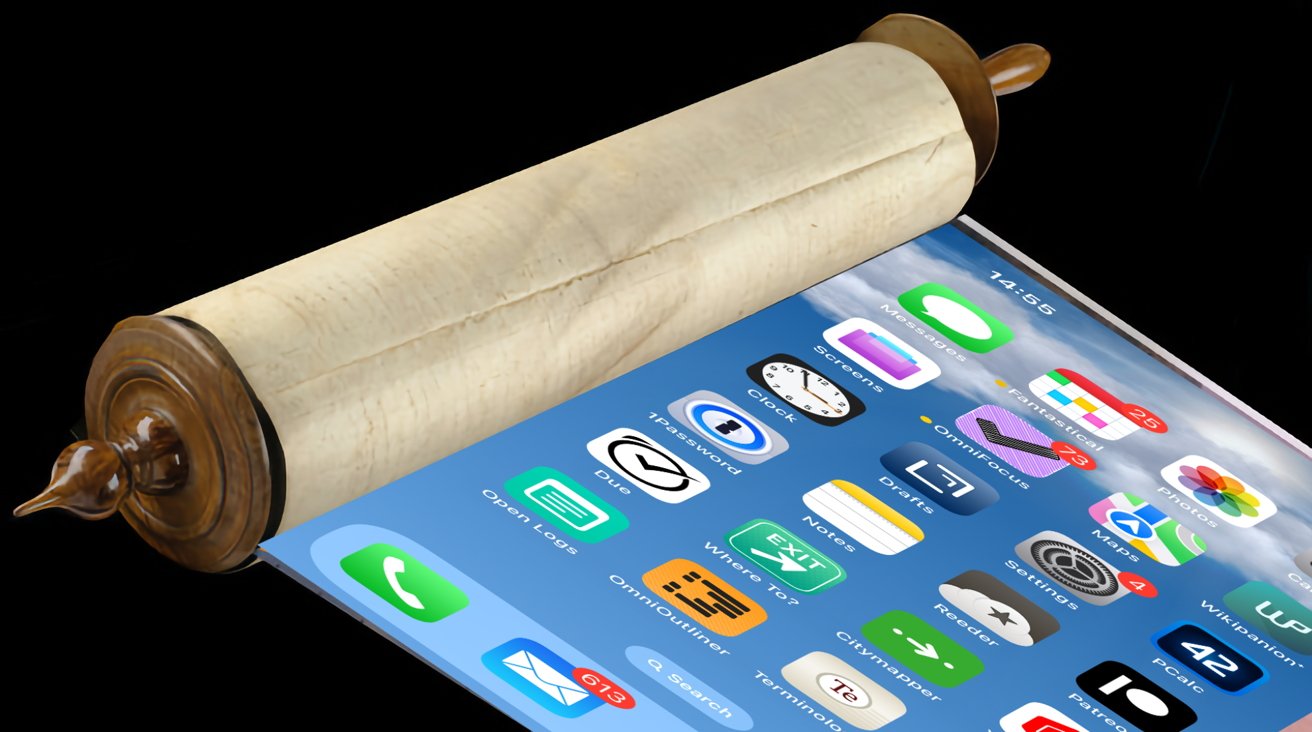
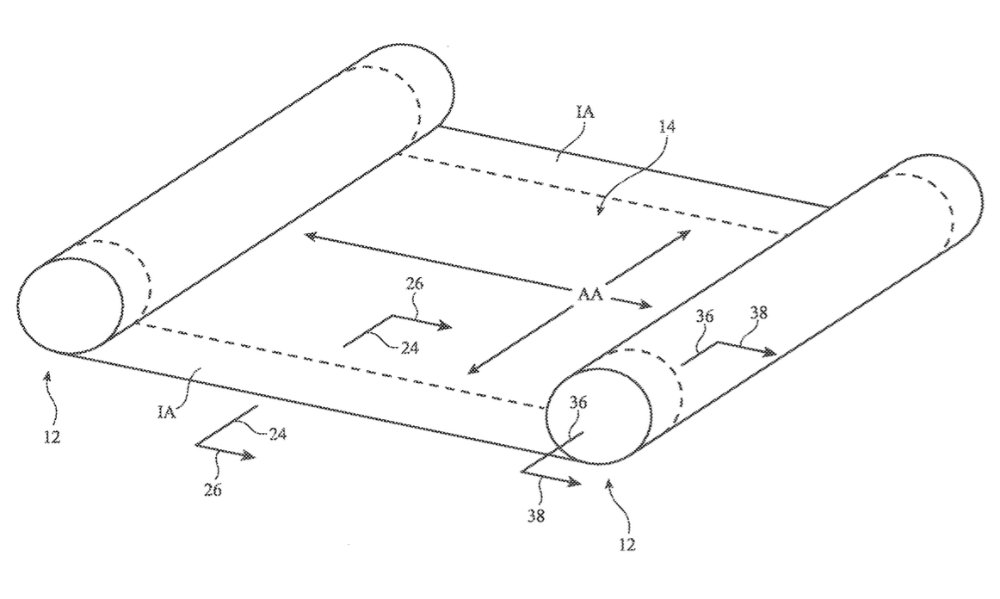
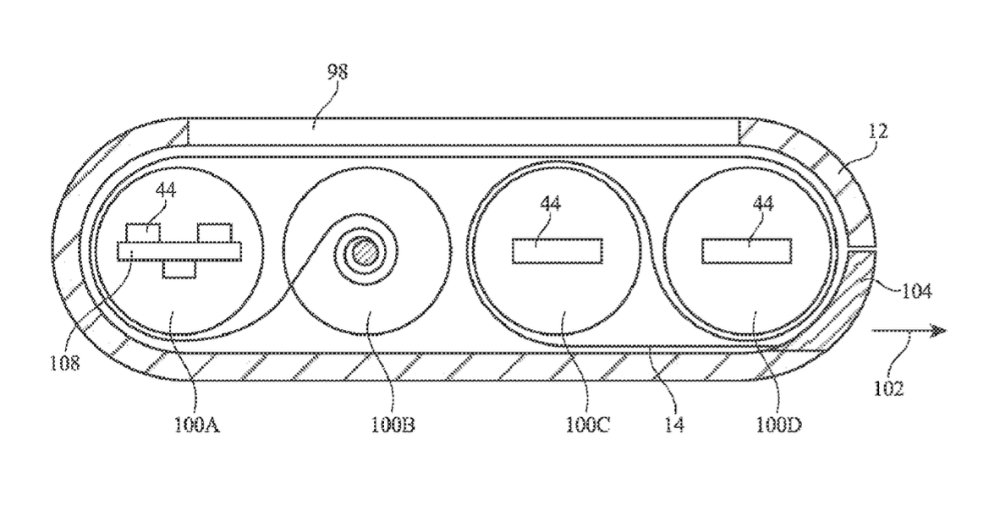




-xl-m.jpg)


-m.jpg)





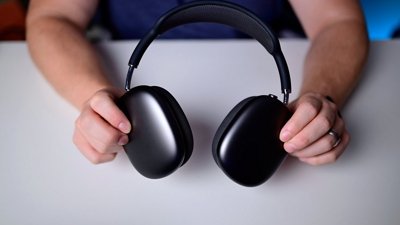
 Andrew Orr
Andrew Orr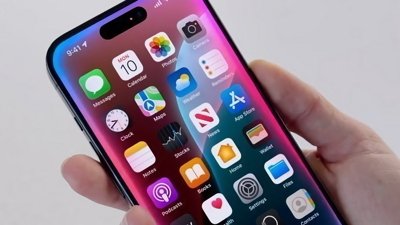



 Christine McKee
Christine McKee
 Chip Loder
Chip Loder
 Thomas Sibilly
Thomas Sibilly
 Wesley Hilliard
Wesley Hilliard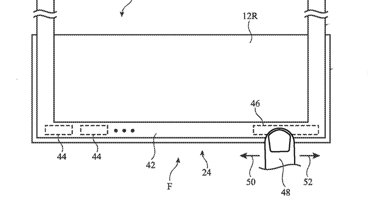








4 Comments
"Is that a scrolling iPad in your pocket or are you just pleased to see me?"
Would MUCH rather have the iPhone be Pencil enabled.